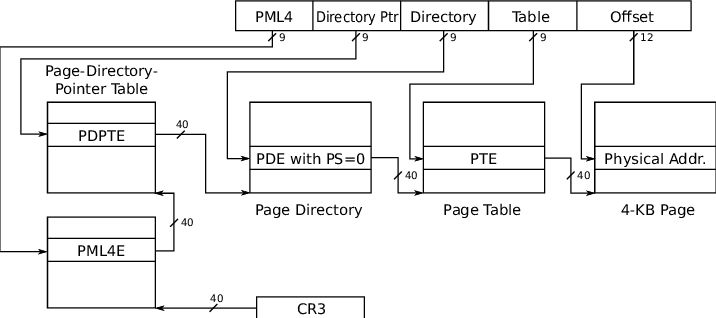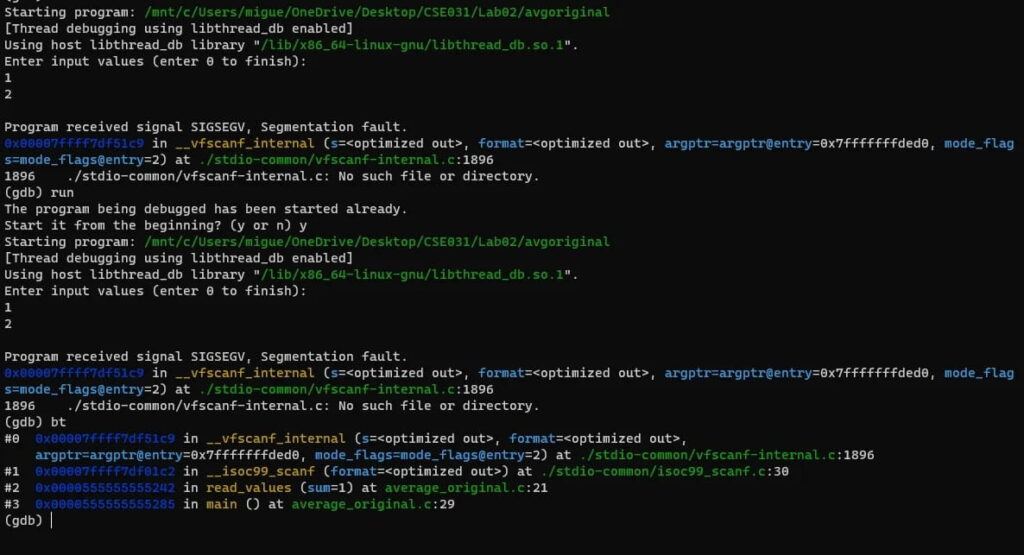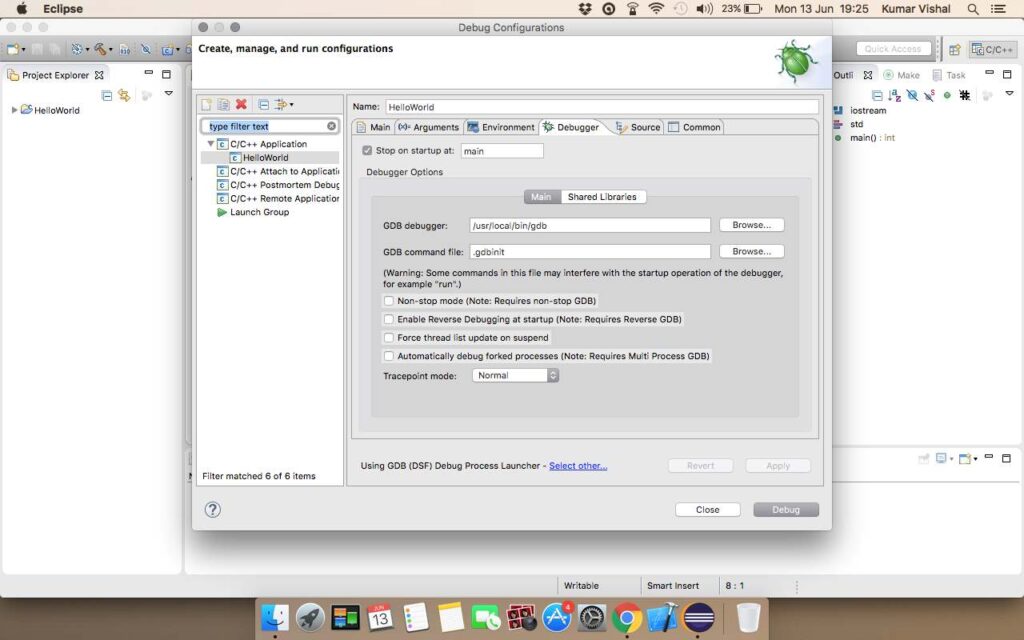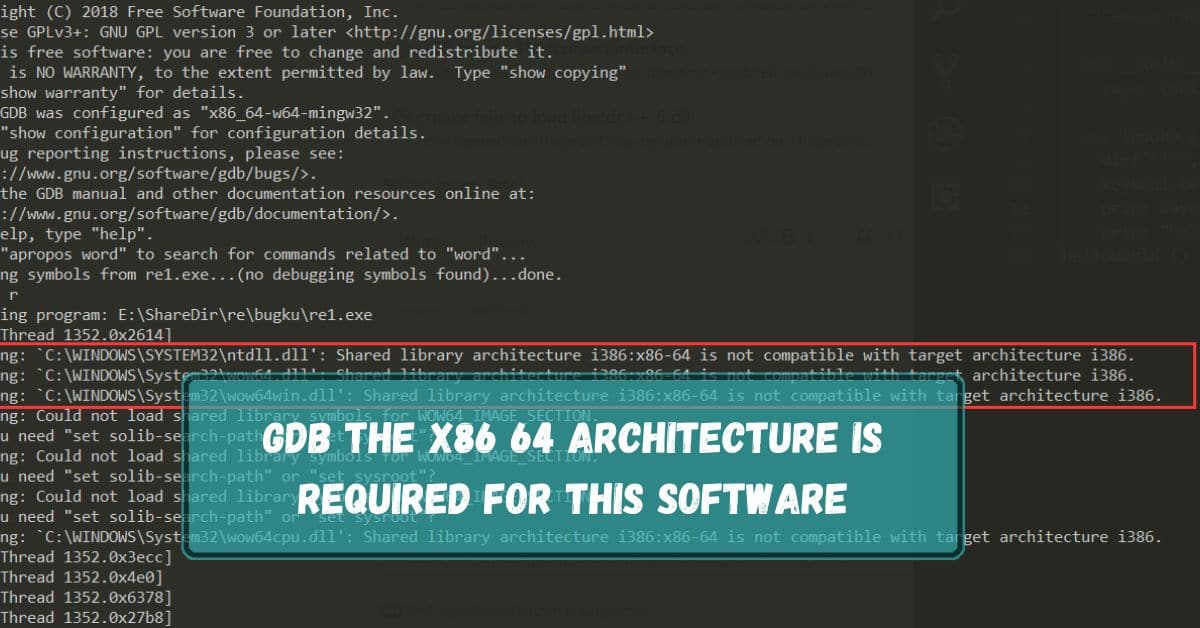GDB (GNU Debugger) is a powerful tool developers use to debug and analyze software. As software becomes increasingly complex, the need for robust debugging tools like GDB becomes more evident.
This error means the software needs a 64-bit system to run. Ensure your computer is 64-bit. If it’s 32-bit, the software won’t work, and you’ll need a compatible version.
In this article, we will discuss “GDB The X86 64 Architecture Is Required For This Software”.
Table of Contents
What Is Gdb?
GDB stands for GNU Debugger, a tool that allows developers to see what is happening inside their program while it runs or crashes.
It’s invaluable for tracking down bugs, inspecting variables, and controlling the execution of programs. GDB supports various programming languages, making it a versatile choice for developers.
Understanding The X86_64 Architecture:

The x86_64 architecture is a 64-bit version of the x86 instruction set, designed to handle more data and memory than its 32-bit predecessor.
This architecture is widely used in modern processors and provides enhanced performance and compatibility with newer software.
1. Difference Between X86 And X86_64:
The primary difference lies in the data width: x86 is 32-bit, while x86_64 is 64-bit. This difference allows x86_64 to handle larger amounts of RAM and perform more complex calculations more efficiently.
2. Why X86_64 Is Preferred For Modern Software?
Modern software demands more memory and processing power, which the x86_64 architecture can deliver. It supports more registers, larger address spaces, and enhanced performance, making it the standard for today’s software development.
Why X86_64 Architecture Is Necessary For Gdb?
Using GDB on the x86_64 architecture provides several advantages, including better performance and compatibility with modern software.
The 64-bit computing capabilities allow developers to debug programs that require large amounts of memory, which is often the case with today’s applications.
1. Compatibility And Performance Benefits:
GDB on x86_64 ensures that developers can fully utilize the capabilities of modern processors. This leads to faster debugging and a smoother development process.
2. 64-Bit Computing Advantages:
With x86_64, GDB can access and manipulate larger datasets, making it more effective for debugging large and complex programs.
3. Examples Of Software Dependent On X86_64:
Many modern applications, particularly those involving large-scale data processing, rely on the x86_64 architecture. Examples include big data analytics tools, high-performance computing software, and modern gaming engines.
Installing Gdb On X86_64 Architecture:
Installing GDB on an x86_64 system is straightforward, but there are some prerequisites and steps to follow depending on the operating system.
1. Prerequisites:
Ensure your system is running on the x86_64 architecture and that you have the necessary permissions To Install Software.
2. Installation Steps On Linux:
- Open your terminal.
- Update your package list: sudo apt-get update.
- Install Gdb: Sudo Apt-Get Install Gdb.
3. Installation Steps On Windows:
- Visit the official website to download the most recent version of GDB.
- Run the installer and follow the on-screen instructions.
- Add GDB to your system’s PATH for easy access.
4. Installation Steps On macOS:
- Open Terminal.
- Install GDB using Homebrew: brew install gdb.
- Follow the additional setup instructions for code-signing on macOS.
Common Issues With Gdb And X86_64:
While GDB is generally reliable, users may encounter issues related to installation or compatibility, particularly when dealing with different operating systems or outdated software.
1. Troubleshooting Installation Errors:
If GDB fails to install, check that your system meets the prerequisites and that all dependencies are properly configured.
2. Handling Compatibility Issues:
Ensure that your software and libraries are compiled for the x86_64 architecture to avoid compatibility problems.
Gdb Vs Other Debugging Tools On X86_64:
GDB is often compared to other debugging tools like LLDB, Valgrind, and WinDbg. Each tool has its strengths, but GDB stands out for its broad support of programming languages and deep integration with the x86_64 architecture.
Unique Features Of Gdb For X86_64 Architecture:
GDB’s ability to handle complex debugging scenarios, such as multi-threaded applications, is particularly beneficial on the x86_64 architecture. It also offers powerful scripting capabilities that can be tailored to specific needs.
Optimizing Gdb Performance On X86_64:

For the best performance, developers can tweak GDB’s settings and use techniques like conditional breakpoints and watchpoints to reduce the time spent in debugging.
1. Tips For Faster Debugging:
- Use non-stop mode to debug multi-threaded programs more efficiently.
- Enable hardware watchpoints for faster variable tracking.
2. Best Practices For Using Gdb:
- Regularly update GDB to take advantage of the latest features.
- Use scripting to automate repetitive tasks and improve efficiency.
Security Considerations On X86_64 Architecture:
Security is crucial when using GDB, especially when debugging sensitive or critical applications. Developers should be aware of the security implications of debugging, such as the risk of exposing sensitive data.
1. How Does GDB Ensure Safe Debugging Practices?
GDB includes features like memory protection and secure remote debugging to help maintain the security of the software being tested.
3. Case Studies:
GDB has been instrumental in the development of various successful software projects. For instance, in the gaming industry, GDB has been used to debug and optimize game engines running on the x86_64 architecture, leading to better performance and stability.
GDB The X86 64 Architecture Is Required For This Software Macbook:
This error on a MacBook means the software needs a 64-bit system to run. Make sure your MacBook supports 64-bit. If not, the software won’t work, and you’ll need a compatible version.
Install GDB On Mac M1:
To install GDB on a Mac M1, use Homebrew by typing brew install gdb in Terminal. After installation, configure GDB with codesign for it to work correctly on your Mac M1.
Marcos GDB Alternative:
For Mac users seeking a GDB alternative, consider LLDB. It’s built into Xcode, works well on macOS, and supports Apple Silicon (M1, M2). It’s a powerful and user-friendly debugger for developers.
The X86_64 Architecture Is Required For This Software:
This error means the software needs a 64-bit (x86_64) system to run. Check if your computer is 64-bit. If it’s 32-bit, the software won’t work, and you’ll need a compatible version.
Debugging An X86 Application In Rosetta For Linux:
To debug an x86 application in Rosetta on Linux, use an emulator like QEMU. Run the x86 app in the emulator, then attach your debugger to troubleshoot and analyze the application effectively.
How To Get GDB Working On Mac?
To get GDB working on a Mac, install it using Homebrew with brew install gdb. After installation, use codesign to authorize GDB. This process allows GDB to run properly on your Mac.
Debug With GDB On Macos 11:

To debug with GDB on macOS 11, install GDB using Homebrew (brew install gdb). After installation, configure it using codesign for proper authorization. Once set up, you can use GDB to debug your programs.
Does GDB Work On Mac M1?
Yes, GDB works on Mac M1, but it requires installation through Homebrew and proper configuration using codesign. However, LLDB is the recommended debugger for M1, as it supports Apple Silicon natively.
What Is The GDB Equivalent On Mac?
The GDB equivalent on Mac is LLDB. It’s included with Xcode, works well on macOS, and supports Apple Silicon. LLDB offers similar debugging features and is user-friendly for developers on Mac.
How do I install GDB on a Macbook M1 to use In Eclipse?
To install GDB on a MacBook M1 for Eclipse, use Homebrew with brew install gdb. Then, configure GDB using codesign to authorize it. Add GDB to Eclipse’s debug configuration for use.
How To Install GDB On Mac Brew?
To install GDB on a Mac using Homebrew, open Terminal and run `brew install gdb`. After installation, use `codesign` to authorize GDB. This allows GDB to function properly on your Mac.
FAQs:
1. What Is The X86_64 Architecture?
The x86_64 architecture is a 64-bit version of the x86 instruction set, designed to handle more data and memory, making it ideal for modern computing needs.
2. How Does Gdb Differ From Other Debugging Tools?
GDB offers extensive support for multiple programming languages, deep integration with x86_64, and powerful debugging features, making it a preferred choice for many developers.
3. Why Is X86_64 Architecture Necessary For Gdb?
The x86_64 architecture provides better performance and compatibility, allowing GDB to debug more complex and memory-intensive software.
4. Can Gdb Be Used On Architectures Other Than X86_64?
Yes, GDB can be used on various architectures, but x86_64 is preferred for its advanced capabilities and widespread adoption.
5. What Are The Alternatives To Gdb?
Alternatives to GDB include LLDB, Valgrind, and WinDbg, each offering unique features and benefits for different debugging needs.
Conclusion:
In conclusion, GDB is an essential tool for debugging modern software, especially on the x86_64 architecture. This architecture’s 64-bit capabilities ensure better performance and compatibility, making it crucial for handling complex programs. Ensuring your system is compatible with x86_64 is key to utilizing GDB effectively.
